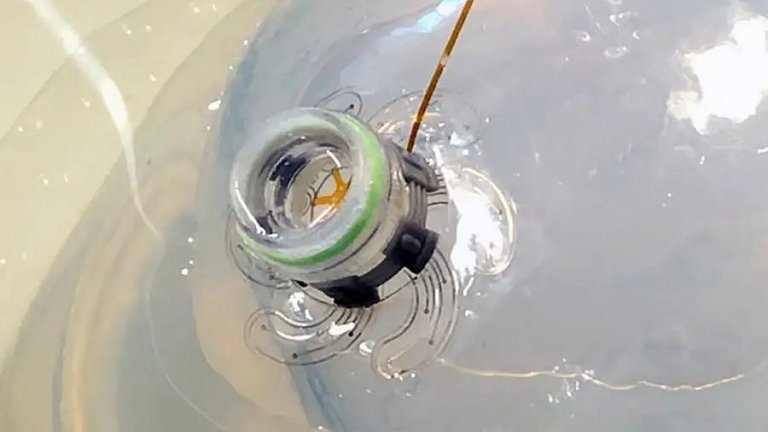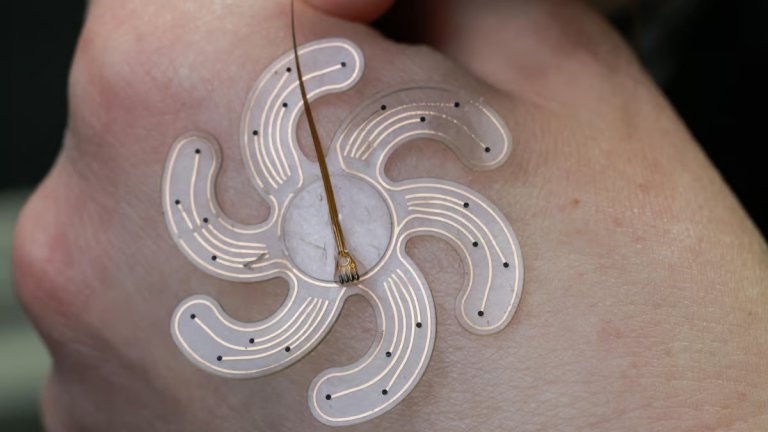05/26/2023
With information from New Scientist

The robot’s soft legs are filled with sensors that measure brain activity.
[Imagem: Sukho Song]
Sensors above the brain
Inserted through a small hole in the skull, a huge robot managed to implant six legs full of sensors on the surface of the brain.
The prototype of this soft robot has been successfully tested on pigs, but the aim is to develop new developments to allow its use in humans.
If it is safe and effective in humans, it could help monitor and even treat people with epileptic seizures or other neurological disorders.
This concept offers a less invasive approach to placing electrodes on the surface of the brain, compared to the traditional method, where surgeons need to drill a hole in the skull the size of a fully extended sensor. With the soft robot, the sensor is rolled up, relying only on a small hole to insert the robot, with the sensors already inflated inside the skull.
“In fact, there is a very large area that you can access without a massive craniotomy,” said Stephanie Lacour of the Swiss Federal Institute of Technology.

These are the sensors because they are extended inside the skull.
[Imagem: EPFL]
Rob to expand
The robot is 2 cm tall and its legs are mainly made of flexible silicone polymer. The legs resemble flower petals, which rotate around the central body.
When folded, the legs are sleeve-like with the cuff pulled back toward the shoulder, as if turned inside out. To stretch, the legs are filled with a fluid that pushes them out.
When fully extended, it covers a diameter of 4 cm. The legs can be lengthened to 8 or 10 centimeters without increasing the size of the hole drilled in the skull. Each leg contains electrodes to monitor brain activity.
The robot was first tested in a brain model, made of plastic and hydrogel, and then implanted into the brain of a Gttingen piglet, the smallest breed of pig in the world, which is often used as a guinea pig. The electrodes recorded patterns of brain activity while the researchers electrically stimulated the minipig’s snout.
Brain robbery
Implanting devices on the surface of the brain is a challenge because there is practically no space between the human brain and skull — on average, only 1 millimeter space. The researchers designed the robot’s legs to extend smoothly to avoid excessive pressure on the brain.
Sensors built into each leg transmit information about when the robot’s legs are fully deployed, without the need for additional cameras or external sensors. “The innovative use of tension sensors has the potential to reduce the need for postoperative imaging and reduce time spent in the operating room,” said researcher Damiano Barone, from the University of Cambridge (UK).
After the brain monitoring task is complete, the robot’s legs are unloaded so that the surgeon can remove them easily. The researchers plan to expand the soft robot into human testing through a startup they’ve named Neurosoft Bioelectronics.
condition: Deployment of an electrocorticography system with a soft automated trigger
Writers: Sukho Song, Florian Valliger, Alex Trouillette, Kyungjin Kim, Stephanie P. Lacour
Publication: Science Robotics
Volume: 8, Issue 78
DOI: 10.1126/scirobotics.add1002
